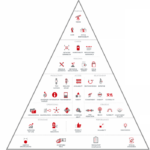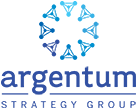 Defining your customers’ unmet need can be one of the trickiest parts of developing a strong positioning statement, especially since it has to be a need your customers know they have. It hurts me every time I hear someone say “we just need to educate our customers,” because that’s a pretty good indication that the speaker has never stopped to consider whether the customers actually want to be educated about that particular topic.
Defining your customers’ unmet need can be one of the trickiest parts of developing a strong positioning statement, especially since it has to be a need your customers know they have. It hurts me every time I hear someone say “we just need to educate our customers,” because that’s a pretty good indication that the speaker has never stopped to consider whether the customers actually want to be educated about that particular topic.
In fact, there’s almost nothing more expensive in the world of marketing than trying to convince someone that they have an unknown need. Especially in the world of B2B, where people generally don’t buy things on impulse or just for fun. The key is to figure out how to articulate the need in a way that aligns with how your target customer is really thinking about their business problems.
It’s also way too easy to try to force words into your potential targets’ mouths. People are often unrealistic about what their target might truly say. I actually had a client suggest that their customers’ unmet need is They wish they had an efficient and effective packaging system that aligns with lean principles. This is way too full of jargon and doesn’t use what I like to call “human words.”
When I’m teaching positioning, I ask my students to start by thinking about both the needs their target has and how the target might articulate that need. For example, they wake up in the morning and they say: I wish there were a way to ______. Or they’re talking to a peer at work and they say If only we could _____.
This challenge is what makes some of Bain’s (the consulting firm that also developed the Net Promoter Score) most recent work around customer needs so exciting. Bain conducted extensive B2B research to identify the Elements of Value® that matter most to customers. These elements incorporate both objective and subjective values and motivations for buying and using business products and services.
There is a great article in Harvard Business Review’s March/April 2018 issue about Bain’s B2B Elements of Value (You can also read a summary of it on the Bain website). Bain’s value pyramid tool is a helpful way to explore your customers’ real needs. One of the most basic ways to use the framework is to go through each of the elements of value and identify which ones your product/service genuinely delivers on. This can jump-start your start thinking around the best unmet customer need to use in your positioning statement. The tool can also help you to establish both differentiation from competition and, ultimately, stronger customer loyalty. It all starts with taking the time to ask good questions.
In addition to Bain’s B2B research on customer needs, they also wrote a great article on B2C unmet needs. That article and its companion infographic was first published in the Harvard Business Review in September 2016.
